Raul Castro didn’t speak English when he first started school, so he got picked on a lot. One day he told his dad that he wanted to learn self-defense (he was a fan of karate movies on TV).
At age 7, Raul started taking karate classes with Fred Mason, head instructor for the Anaheim Police Activities League/Cops 4 Kids Martial Arts Program.
“The instructors, they were nice to me,” says Castro. “They would encourage me to keep trying my best, and that made me stick around.”
Now 13, Raul is a black belt and instructor himself, and he doesn’t get picked on anymore.
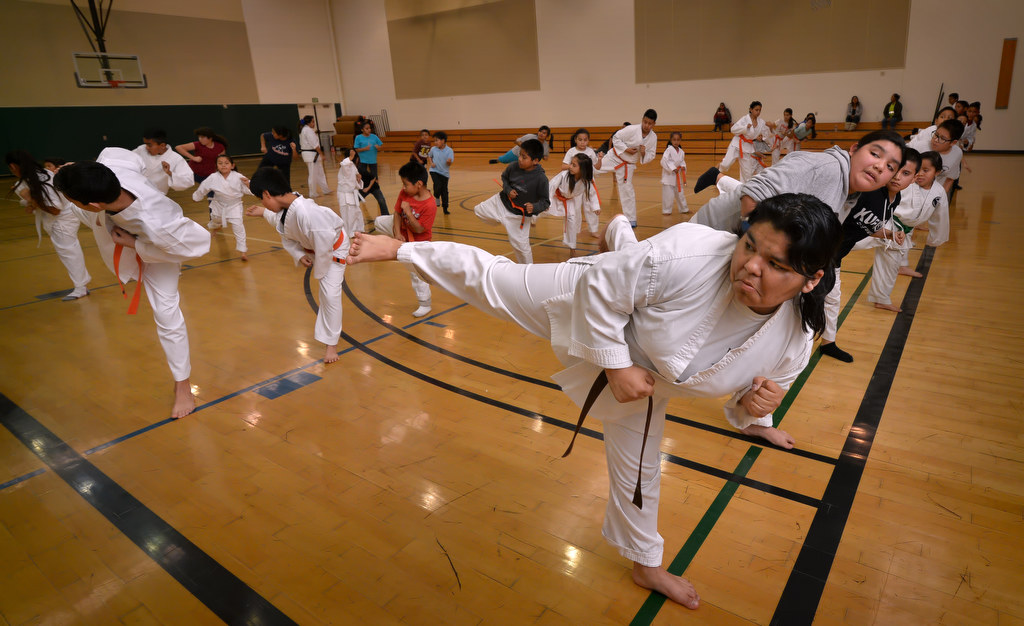
Carolina Garcia, 16, front center, participates in an Anaheim Police Activities League/Cops 4 Kids karate class.
Photo by Steven Georges/Behind the Badge OC
The Anaheim Police Department’s Cops 4 Kids (C4K) program began in 1992 as an idea by two Anaheim Police officers working in the Anna Drive neighborhood, says Sgt. Steve Pena, C4K coordinator.
“Retired Sgt. Chuck Knight and retired Capt. Joe Vargas noticed the kids had no place to go after school for organized physical activities,” says Pena. “Sgt. Knight, who is a black belt in karate, offered to meet with several kids and teach them karate.”
The goal of C4K – which now offers several after-school programs for kids, including a Junior Cadet Program and boxing classes – is to create a positive relationship between police and youth in the community, and offering programs providing an alternative to gangs, drugs and other criminal behavior, says Pena.
Mason and his son, Chris, became involved in instructing karate for the program in 1995 and have kept teaching for 21 years. The program is open to students ages 6 to 18.
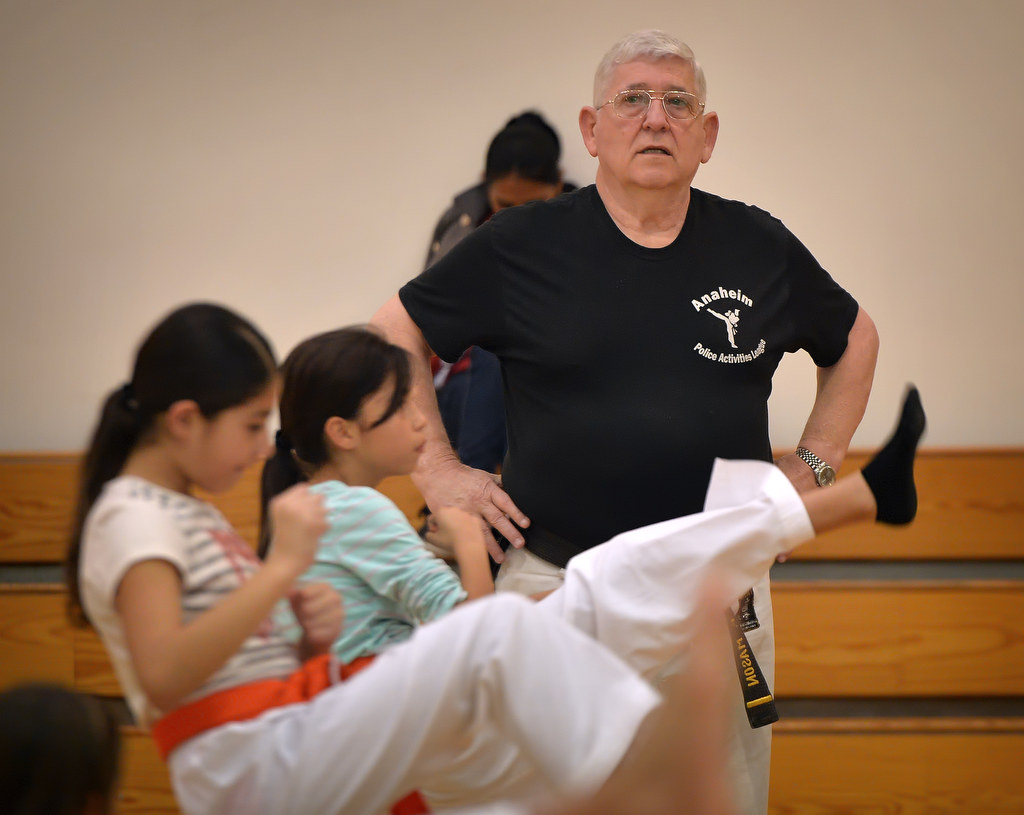
Fred Mason, Anaheim Police Activities League/Cops 4 Kids karate instructor, keeps an eye on the kids during class.
Photo by Steven Georges/Behind the Badge OC
“I first got involved in karate when I was stationed on Okinawa, Japan in the Navy,” says Mason. “When I came back to the States and got married, we had our son. When he was around 6 or 7, I wanted him to study karate for the discipline and other attributes of the art, especially self-defense. I remembered some of the problems I had in school with bullies and I didn’t want him to have to go through the same things I did.”
There are some major plusses to teaching a child karate, including building confidence, respect, responsibility (for yourself and others), focus and situational awareness, says Mason.
“The biggest thing it teaches you, though, is trusting your gut instinct,” he says. “If you feel something is wrong, there probably is.”
It’s clear the nearly 50 students at a recent Wednesday evening class are learning these lessons and more – and the best part is they’re doing it while having fun practicing their kicks, punches and kiais (a loud kiai is a karate yell that helps focus power, tighten the abdomen and startle a would-be attacker, according to Mason).
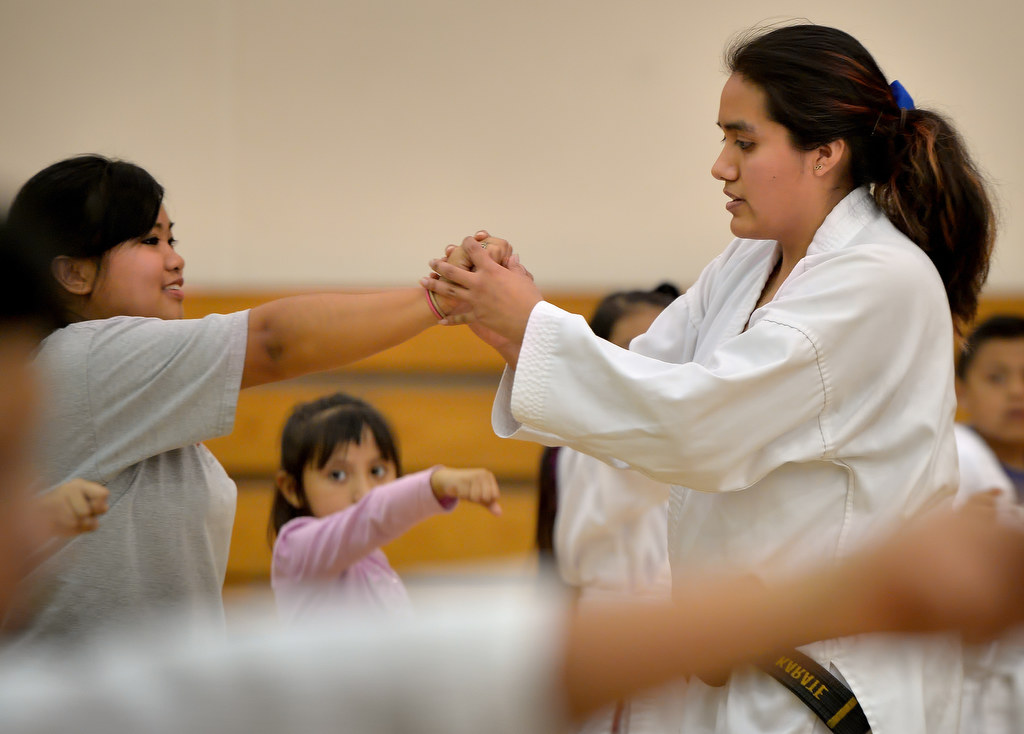
Volunteer Instructor Estefani Bautista, 23, right, helps out Jasmine Cadavona with her punches.
Photo by Steven Georges/Behind the Badge OC
Many of the students have family members sitting on the bleachers on the sidelines of the basketball court at the Downtown Anaheim Youth Center, where the karate classes are held. Mason remarks that the karate program is 95 percent a “family affair,” since there are many siblings that take the classes together.
Mason walks around with Castro and Estefani Bautista, 23, instructing and correcting form. The children are at ease but respectful of his and the other instructors’ authority.
“We stress a lot having respect for people (and) following directions,” says Bautista, an instructor who began as a student in the karate program 17 years ago.
For Bautista, the program has helped build her confidence. Being an instructor has made her less timid since she regularly has to talk to students and parents in a teaching setting.
“I used to be very shy before this,” she says.
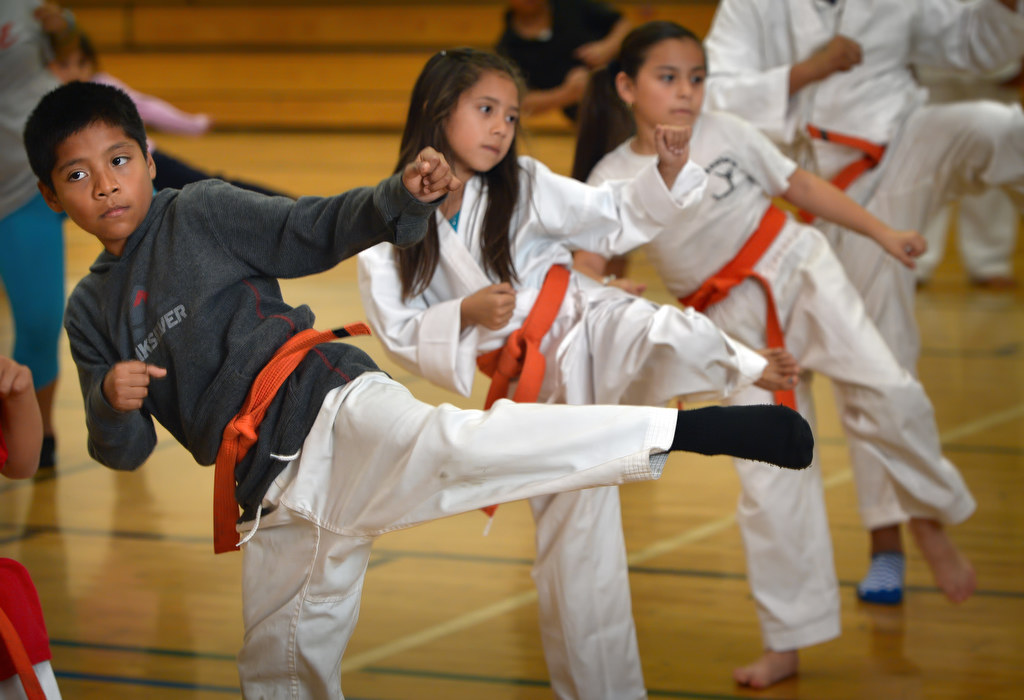
Kids run through kicks at the beginning of karate class at the Downtown Anaheim Youth Center.
Photo by Steven Georges/Behind the Badge OC
Bautista often sees the benefits the classes have on the kids. Their confidence builds as they move up levels in the belting system (from brown to red, for instance).
“They see themselves improving,” she says.
Some are picked on in school. Others can’t focus in class or need help with self-control. And the program helps them.
Some children have told Bautista that they live in neighborhoods where they hear gunfire, and that they feel safer now knowing they can defend their family.
Mason says what the students learn goes beyond themselves. It’s also about defending others.
“We are anti-bullying,” he says. “That’s part of what being a martial artist is. It’s to protect yourself and to protect others that can’t protect themselves.”
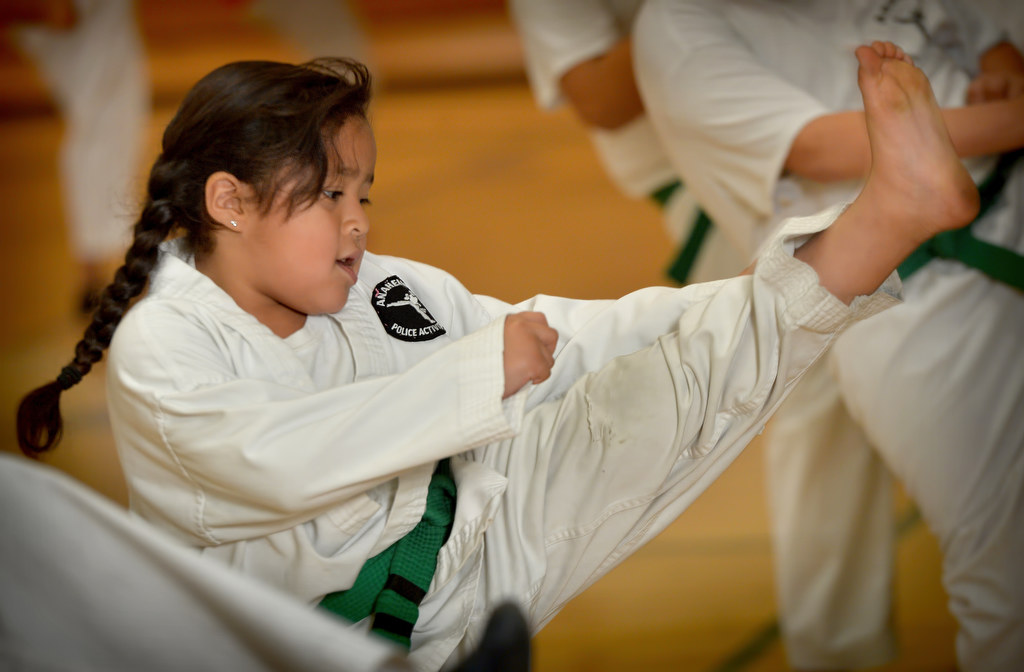
Caylee Castro, 6, runs through her kick exercises during an Anaheim Police Activities League/Cops 4 Kids karate class.
Photo by Steven Georges/Behind the Badge OC
Mariana Martinez, 14, who made brown belt several months ago, continues reaping benefits of the program since she joined almost two years ago.
“I like that here you can express yourself however you want and nobody judges you,” she says. “[The program] actually helps a lot. It helps you be more social because you get to meet new people here and it’s also about self-defense.”
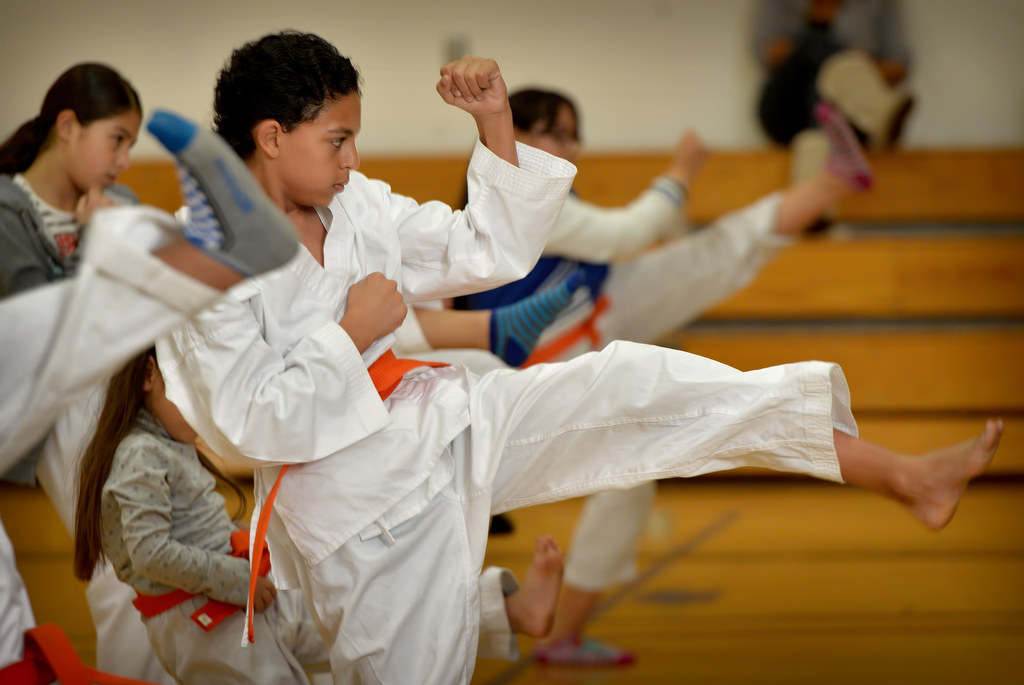
Ahmed Mohamad, 11, participates in kicks with the rest of his class during an Anaheim Police Activities League/Cops 4 Kids karate class.
Photo by Steven Georges/Behind the Badge OC
 Behind the Badge
Behind the Badge



